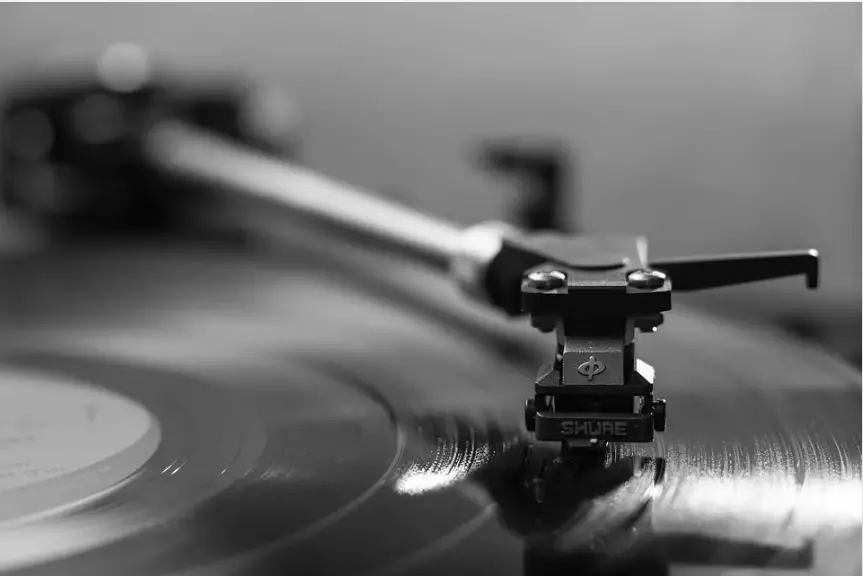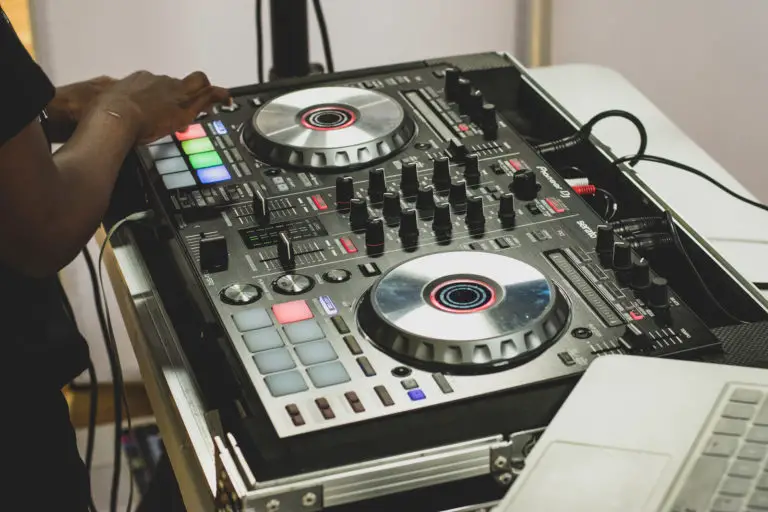How Long Do Vinyl Records Last?
In the last couple of decades, digital has managed to take over old-school analog technology in many areas. Regardless, the return of vinyl records is here, with the sale of vinyl LPs more than doubling. Vinyl records are thriving thanks to renewed interest, but those new to vinyl markets have a few questions.
One of the critical questions: how long do vinyl records last?
Under proper care, a vinyl record can last in an excellent state for well over 100 years. If you aim to keep your vinyl records in good condition for a lifetime, then you need to take care of them.
But with that in mind, how do you take care of a vinyl record in the first place? What are they made out of? And why do they even deteriorate? This article aims to answer all of those questions, and then some.
What’s a Vinyl Record Made Out of?
By default, vinyl records come from a resin mix that contains plasticizers, heat stabilizers, lubricants, fillers, colorants, and the main ingredient: polyvinyl chloride, otherwise known as PVC. These ingredients are then heated and combined before getting pressed into the disc shape we all know and love, hence record pressing.
The music (previously recorded, mixed, and mastered on tape) is then “placed” on the disc by etching grooves on its surface; later picked up by a record player’s needle to recreate the sound and play the music.
As for the primary material itself, PVC is known to be very durable. Outside of music, the material is the world’s third-most widely produced synthetic plastic polymer and is often part of underground piping and construction.
When referencing vinyl, it comes with a more flexible structure, making vinyl records prone to warping under the wrong conditions. Luckily, you can take certain precautions and steps right at home to prevent this from happening.
For more info on how vinyl records are made, check out this video:
https://www.youtube.com/embed/Eq5EDXNe-HQ
Why do Vinyl Records Get Damaged and Deteriorate?
The more you listen to the music, the more your player’s tip tracks the grooves in your vinyl record, effectively creating friction that damages the record over time. This design is part of listening to music in this format, and there is no other way to avoid it other than just storing your records.
A record player (or turntable) uses a toning arm (or cartridge) with a stylus tip to produce that familiar warm analog sound. The end reads grooves on the record surface and follows the divots as it turns. The nature and degree of this movement become translated into varying frequencies that we hear as music through our speakers.
Still, a well-maintained disc will take hundreds and hundreds of spins before you can even notice any degradation in the sound quality, and even then, the difference wouldn’t be that big. In fact, for many people, the record noises (like the occasional clicks, pops, and crackles) contribute to the vinyl’s character as a format, as it’s not present in digital streaming and audio CDs.
Furthermore, other factors affect your vinyl record’s quality more than regular spinning will. Yes, it’s no secret that vinyl records are delicate and can be easily scratched or damaged, but what happens outside of the record player affects the vinyl more than spinning inside it will do.
What Are the Conditions That Promote Vinyl Deterioration?
Aside from regular use, vinyl longevity also depends on its quality. The contributing factors for this include:
The Material Quality of Your Record
While vinyl records always use PVC, many manufacturers use recycled PVC instead of newly created ones. Usually, this PVC type comes from excess record copies melted down and mixed in with new vinyl material.
But while this more eco-friendly method works just fine, the quality of the resulting record is often at a lower quality compared to ones made from new PVC. Because many of the vinyl’s sound characteristics depend on the record’s surface, this recycled PVC vinyl often has a lower audio quality. You are more likely to hear unwanted noises with recycled vinyl.
Overall, these types of records aren’t always up to par with the quality. However, recycling vinyl doesn’t mean that the quality of your albums deteriorates.
Production
Not all viny production plants operate in the same way. Some of them cut corners or rush the process.
For example, one production plant might be meticulous in ensuring there are no flaws in production. Another workspace might have a more inexperienced crew and end up rushing out projects to meet deadlines. When such instances happen, the quality of the product ends up suffering.
Connect with your local audiophile or vinyl enthusiast group to get information. You can also lookup public reviews of the production team on Google.
Base this on overall reputation, which should be primarily positive. You can also ask for a sample record, seeing the quality of work firsthand.
Weight and Thickness
Although there’s no defined standard to the weight of an average vinyl record, it usually weighs about 120 grams, with some special editions weighing as much as 180mg. Unfortunately, many record companies cut back on costs, leading to vinyl records that are thinner and flimsier than usual. Often, these are more fragile and tend to get warped more easily.
Record Player Quality
Last but not least is the quality of the record player. Simply put, the cheaper your record player is, the lower quality it has.
You will mainly see this quality issue on the record needle. Record players who have seen heavy usage might need a replacement.
This scenario increases the chances of your records’ surface getting scratched more quickly. Your needles (stylus tip) need regular replacement. If you are a record owner, the longest you should wait is after 1000 hours of plays.
If the sound sounds warped, scratched, or distorted, you know you need to replace your needle. Allowing it to spin regardless of diminished quality will result in your records receiving damage.
How to Make Your Vinyls Last
Method 1 – Clean Your Records
Always clean your records before playing them and before you (gently) place them back inside their respective sleeves.
All records receive small amounts of dust and dirt build-up, so you should be sure to clean it before using it. The dust cover works to prevent dust build-up, but it isn’t 100% effective.
Luckily, this should be an easy task, and there are plenty of available methods:
- Wet solutions
- Acquiring a record brush
- Having a complete cleaning kit
Just be gentle with the actual process of cleaning to avoid more scratches. Look for marks under soft illumination, too, such as fingerprints, discolorations, and smudges. You can also use an anti-static brush to help in removing any static.
Method 2 – Proper Record Handling
When it comes to record handling, remember that touching the surface is a big no-no, as our hands often contain grease, dirt, and natural oil that can build up over time in the record’s cracks and affect its overall quality.
Always clean your hand before touching a record. And even then, only touch the edges of the disc itself. Remember, a clean record is a great-sounding record.
Method 3 – Do Not Stack Records
Remember that vinyl records are made from a malleable material, so stacking them on top of each other could result in extra weight that can lead to warping.
Instead, store your records upright and side by side. For maximum protection, you can also put a stopper between every six inches to further avoid warping.
Method 4 – Correct Vinyl Storage
It requires more than just vertical storing for your records to last; you will also need to invest in high-quality inner sleeves that will keep pollutants away from your discs. The same principle should apply if you plan on shipping vinyl to ensure they don’t get damaged in transit.
Additionally, storing them in a box with diagonal posts in the corners can make your records bow over time, so opt for wooden crates and the like. If the container has a lid, then that should also help with the dust.
Method 5 – Heat and Cold Exposure
Rooms with vinyl should neither be too hot nor too cold. Hot rooms (especially when the record is under direct sunlight) warps records. Cold temperatures can shatter discs. On top of that, humidity can conduct static charges that attract dust and dirt.
Think of your records as museum pieces, keeping them in rooms with balanced temperatures. However, if you live somewhere particularly humid, using a dehumidifier should help your situation. Finding a storage space above 65-70 degrees Fahrenheit is optimal for vinyl storage.
Method 6 – Using Good Equipment (And Using Equipment Like A Pro)
Lastly, invest in a high-quality record player to listen to your vinyl records. That means no imbalanced tonal arms or rough stylus tips.
Also, Play your records at the correct RPM. Always make sure to allow the platter to stop before removing the disc. Forcing your disc to stop is on the way to getting permanent damage.
Final ThoughtsHow Long Do Vinyl Records Last?
While it’s no secret that vinyl records are, in a sense, fragile, how long they will last is ultimately up to you. As with many things, proper care is needed to keep them in excellent condition, and your vinyl collection is no exception.
So handle them carefully, never leave them out of their sleeve for too long, store them correctly, and invest in high-quality record players. With a little TLC, they should provide you with warm music to enjoy for decades to come.








